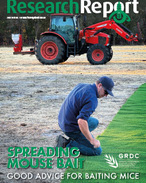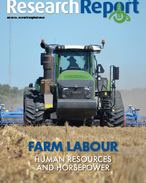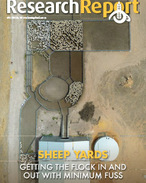This article is 7 years old. Images might not display.
The latest reports from the Grains Research and Development Corporation’s (GRDC) regular mouse monitoring program indicate that mouse populations remain at moderate levels in grain-growing regions across both states.
However, while mouse numbers are expected to decline over the remainder of winter, particularly if conditions are cold and wet, there is concern among scientists monitoring mice populations.
The biggest worry is that the sizeable background population and potential stored food reserves will enable a rapid increase in numbers when breeding recommences in spring.
Growers are being advised by the GRDC-supported National Mouse Management Working Group to continue to actively monitor mouse activity and look for signs of mouse damage, such as chewed crop tillers and nodes.
If mouse populations are high (more than 200 mice/hectare is when they cause economic damage), growers should consider baiting now before crops flower, as flowering crops are highly vulnerable to damage from mice.
If mouse populations are low (10-20 mice/ha) to moderate (50-100 mice/ha), growers should remain vigilant until the start of spring. Trapping in June near Mallala in SA revealed densities of 30-50 mice/ha, and at Walpeup in Victoria densities were 30-60 mice/ha.
Growers are encouraged to communicate with their local bait supplier to be informed of supply timeframes and to determine whether pre-purchasing of bait is required.
Crops cannot be treated with bait within 14 days of commencement of harvesting. CSIRO researcher Steve Henry, who has just completed another round of surveying mouse activity for the GRDC
investment, said vigilance over the coming weeks is critical as crops cannot compensate for heavy damage should it occur.
“If numbers build up significantly over spring, crops could be at serious risk of damage and the problem could continue after harvest and ahead of sowing next year’s crops,” Henry said.
“Even if growers don’t think they have a mouse problem, they should continue to monitor for activity through winter.”
Farmers are encouraged to record their observations on mouse populations on MouseAlert app so the CSIRO can track trends in mouse populations.
For information about monitoring mouse activity, contact Steve Henry from CSIRO on 0428 633844 or email steve.henry@csiro.au.
Information about mouse control is available via the MouseAlert website, www.mousealert.org.au.






















